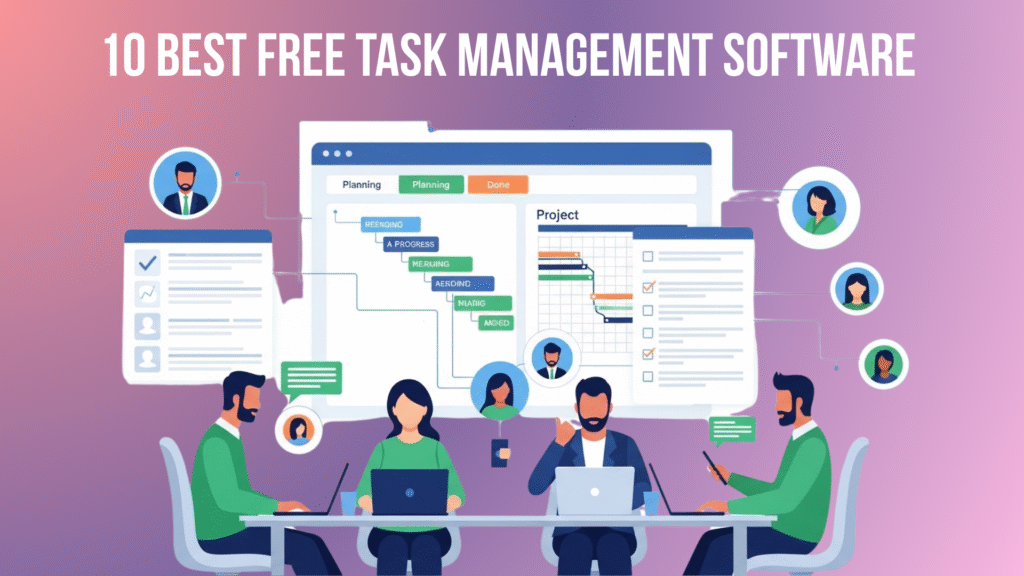Managing tasks, deadlines, and responsibilities can get messy fast—especially if you’re a small team or working alone. The right free task management software makes everything easier: keeping track of what needs to get done, sharing work, and hitting every deadline.
In this article, I reviewed dozens of tools and selected 10 that offer truly free plans in 2025. Each one has enough features to help you organize tasks well, without spending a single dollar. You’ll see what each does, what you might miss out, and which tool suits your needs best.
8 Factors to Consider Before Choosing Free Task Management Software
Before you pick a free task management tool, it’s important to evaluate a few key factors. Checking these in advance can save you the frustration of switching tools later.
1. Number Of Users/Team Size Allowed
Free plans often limit how many people can use the software. Make sure it can handle your current team size and potential growth.
2. Number Of Projects Or Boards
Some tools allow unlimited projects, while others limit the number of projects or boards on free plans. Check the limit to avoid hitting a wall.
3. Views & Layouts (Kanban, Calendar, Gantt)
Different layouts serve different needs—Kanban for workflow, calendars for deadlines, Gantt for long-term planning. Pick the one that suits your style.
4. Integrations
See if the tool connects with email, calendars, Slack, Google Workspace, or other apps you use. Integrations save time and reduce manual work.
5. Mobile & Desktop Access
If you or your team often work on phones or tablets, you’ll need reliable mobile apps in addition to the desktop version.
6. Storage / File Size Limits
Free plans usually restrict how much you can upload. If you attach a lot of files, storage and file-size limits can slow you down.
7. Collaboration Features
Features like task comments, discussion boards, reminders, and sharing tools improve team communication and productivity.
8. Support & Documentation
Free doesn’t always mean poor support. Look for tools with help centers, tutorials, or forums to make onboarding easier.
Considering these factors before signing up will help you choose a free task management tool that truly fits your team’s size, workflow, and future growth—saving you time and avoiding unnecessary headaches down the road.
Comparison Table Among The Best Management Software:
Here’s a side-by-side look at the 10 free tools we’ll cover. Helps you see strengths and limits fast.
| Tool | Users Allowed Free | Projects / Boards / Tasks Limits | Key Free Features | Best For |
| ProProfs Project | Up to 3 users (free plan) | Unlimited projects & tasks | Full features free for 3 users; time tracking; Gantt & Kanban views | Very small teams wanting a full tool with no feature cuts |
| Trello | Free workspace limited to 10 collaborators/users | 10 boards per workspace, unlimited cards & lists; 1 Power-Up per board; 10 MB file size limit per file | Boards, lists, cards; mobile apps; basic Power-Ups; collaboration | Individuals or small teams who like visual boards and simple layouts |
| Zoho Projects | Free plan supports up to 5 users | 3 projects, 5 GB storage | Gantt chart view; calendar; issue & task reports; mobile support | Small businesses/startups needing Gantt & timeline views |
| Freedcamp | Unlimited users on the free plan | Unlimited projects, tasks, storage; file upload limit 10 MB per file | Unlimited projects; discussion boards; milestone tracking; calendar | Users who want many projects and flexible collaboration without cost |
| Plaky | Unlimited users on the free plan | Unlimited projects and tasks | Visual layouts; team collaboration, web & mobile supporting | Teams wanting simple, visual task tracking with zero cost |
| Teamwork.com | Free plan for up to 5 users | 2 active projects, time tracking, and limited storage | Task assignment; basic project views; some reporting & mobile access | Teams that need more traditional task/project views and some client work |
| Todoist | Free plan for 1 user (collaboration limit 5 collaborators per project) | 5 active projects, sub-tasks, due dates; limited reminders | Clean UI, mobile apps, integrations, simple filters & labels | Personal tasks, students, and solo work where simplicity is needed |
| Asana | Free plan for up to 10 users (previously 15; changed in 2024) | Unlimited tasks & projects; basic list/board views; 100 MB file attachment size per file | Basic task tracking, list/board views; team collaboration; many integrations | Teams wanting a balance of power & ease; many integrations |
| ClickUp | Free plan for unlimited users, but usage caps apply | 5 Spaces, 100 MB storage; unlimited tasks, docs, chat | Many layouts; mobile & desktop; good free feature set; collaboration | Users who want versatile tools and grow over time |
| Nifty | Free plan for unlimited users, limited to 2 active projects | Kanban, tasks, boards; team collaboration; calendar views | Small remote teams who like collaboration & simple visuals |
Top 10 Free Task Management Software In 2025
1) ProProfs Project
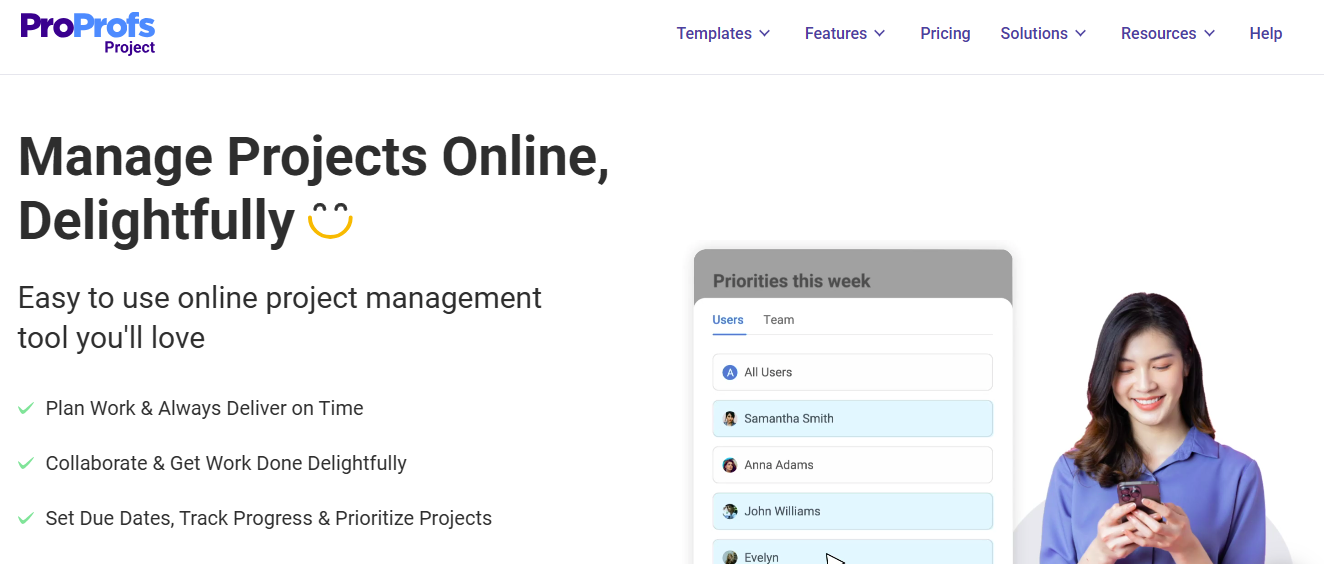
ProProfs Project is a task/project-management tool designed for small teams. It packs many features, including task workflows, time tracking, reporting, and different views like Kanban and Gantt.
Features (Free Plan)
- Forever-free plan for up to 3 users with all premium features unlocked.
- Unlimited projects and tasks.
- Time tracking, invoicing tools, collaboration, Gantt chart view, and Kanban view.
- Integrations with common tools (calendars, etc.). (Some may need a paid plan; check the region.)
Reviews
ProProfs gets praise for giving premium features for free to small teams. People say it’s great for startups that want to try everything without paying. Some users say the free version UI is good and easy to learn. Drawback: free plan limited to 3 users.
Pricing Overview
- Free plan: $0 forever, up to 3 users.
- Paid plan: starts around $39.97 per month for greater usage.
Pros
- All features are available on the free plan (no major feature cuts).
- Good advanced views (Kanban, Gantt) even for free.
- Strong reporting & collaboration tools.
Cons
- Limited user seats (only 3 users in the free plan).
- It may be overkill for individuals.
- If you grow, the cost jumps when upgrading.
Best For
- Very small teams (2-3 people) want full features.
- Startups are trying to test many features before paying.
If you are small and want serious task management without paying, ProProfs Project is among the best. It gives features that many paid tools reserve for premium plans. Just watch out as you grow.
2) Trello
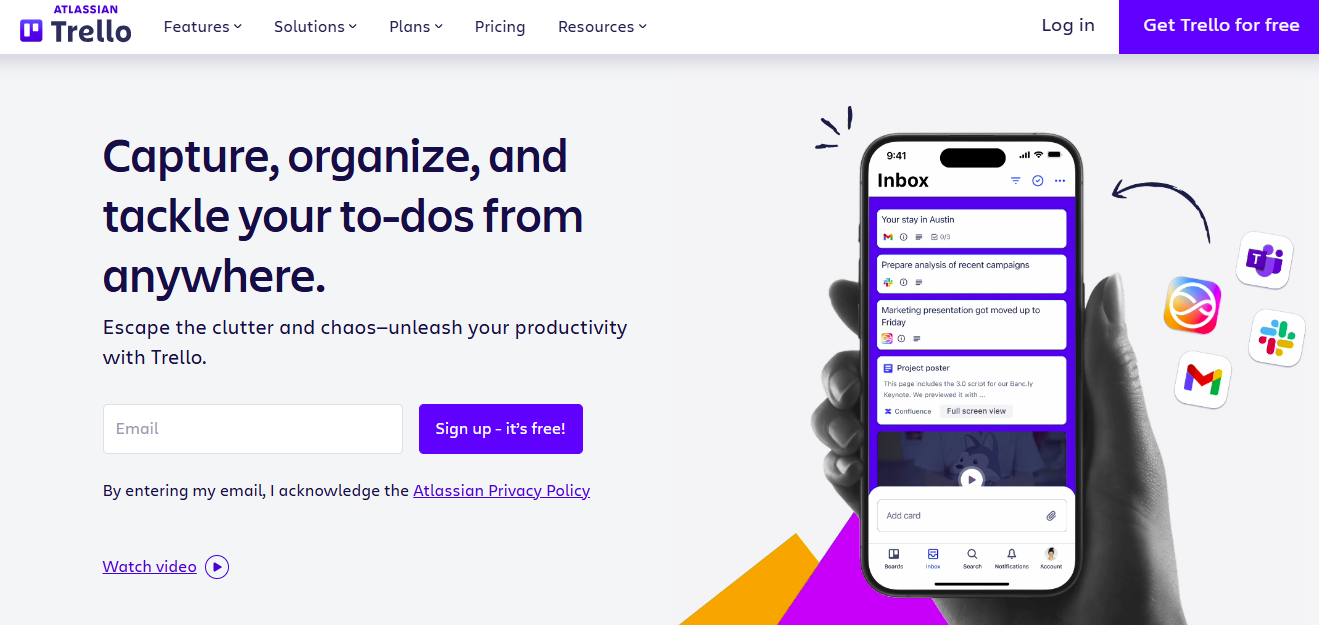
Trello uses a visual board model (cards and lists) that many people love. It’s simple, clean, and works well for personal task lists, small projects, or teams just starting out with task management.
Features (Free Plan)
- Unlimited cards (tasks) in a free plan.
- Up to 10 boards per workspace.
- Unlimited Power-Ups per board, but some features are limited.
- Basic file attachments with a limit (~10 MB per file).
- Mobile apps, due dates, collaborators, board backgrounds, and stickers.
Reviews
Users like Trello for being intuitive. Many say its layout is easy to pick up. Some feel the free version lacks advanced views (timeline, dashboard, etc.). Good for list-based work but not as strong for large project planning.
Pricing Overview
- Free plan: $0, basic boards and task tools.
- Paid versions for more features (custom fields, advanced automation, etc.) start above the free.
Pros
- Very easy to use.
- Clear visual layout makes tracking tasks fun.
- Good integrations and mobile support.
Cons
- The board limit in the free plan may restrict large workflows.
- Limited file size and attachments.
- Advanced reporting, timeline views reserved for paid versions.
Best For
- Individuals or small teams need a simple, visual task manager.
- Projects that don’t need complex dependencies or timelines.
Trello is perfect when you want something free, intuitive, and good for basic task tracking. As your needs grow, you’ll see where it hits its limits — then decide if upgrading makes sense.
3) Zoho Projects
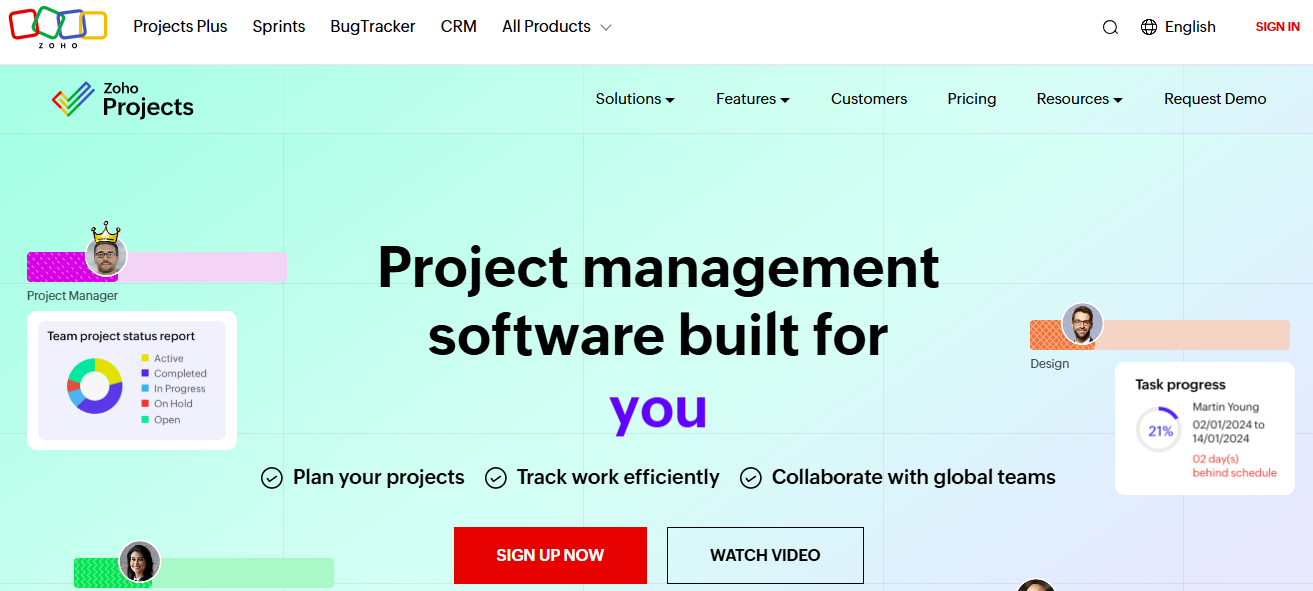 Zoho Projects is part of the Zoho suite. It offers structured project/task management with more formal project planning tools like milestones and dependency tracking.
Zoho Projects is part of the Zoho suite. It offers structured project/task management with more formal project planning tools like milestones and dependency tracking.
Features (Free Plan)
- Free plan includes basic modules: task lists, issues, tags, calendar, and Gantt chart view.
- Task and issue reports in the free version.
- Integrations with Google Calendar, etc. Mobile app included.
Reviews
People like Zoho Projects because its free plan gives views and tools often missing in basic tools. Some say project limits and a restricted number of users/projects are downsides.
Pricing Overview
- Free plan: available with limits on projects/users.
- Paid tiers unlock more users, more storage, and more advanced features.
Pros
- Offers Gantt charts even on free plans.
- Good for planning and visualization.
- Known brand with reliable support.
Cons
- Limits on the number of projects/users in the free plan.
- Some advanced features and integrations are only in paid tiers.
Best For
- Startups or teams wanting structured project planning with a free budget.
- Users who need timeline views/dependencies but not a huge team.
Zoho Projects gives good value for free when you want more than just task lists. If your project is small and growth is slow, it can serve you well for a long time.
4) Freedcamp
 Freedcamp is like a digital workspace where you and your team can handle many tasks, files, discussions, events—all on one platform, without cost for the basics.
Freedcamp is like a digital workspace where you and your team can handle many tasks, files, discussions, events—all on one platform, without cost for the basics.
Features (Free Plan)
- Unlimited users, projects, and tasks.
- Discussion boards, calendar scheduling, and event management.
- File attachments, milestone tracking, and time tracking (depending on features).
Reviews
Free users find Freedcamp very flexible; they like that there’s no big cost to try many features. Some say free features are good, but performance or priority support is paid.
Pricing Overview
- Free plan: core features, unlimited users/projects.
- Paid plans add more storage, advanced features, and priority support.
Pros
- Very generous free plan.
- Works well for many projects and many people collaborating.
- Broad feature set for no cost.
Cons
- Some advanced or enterprise features are locked behind paid tiers.
- Support from free users may not be as fast.
Best For
- Teams need many projects and many collaborators without cost.
- Users want flexibility and don’t mind simpler UI or delays in support.
Freedcamp is one of the best tools if you need it for free for many users and projects. Just understand what you may give up (like speed of support) when staying on the free tier.
5) Plaky
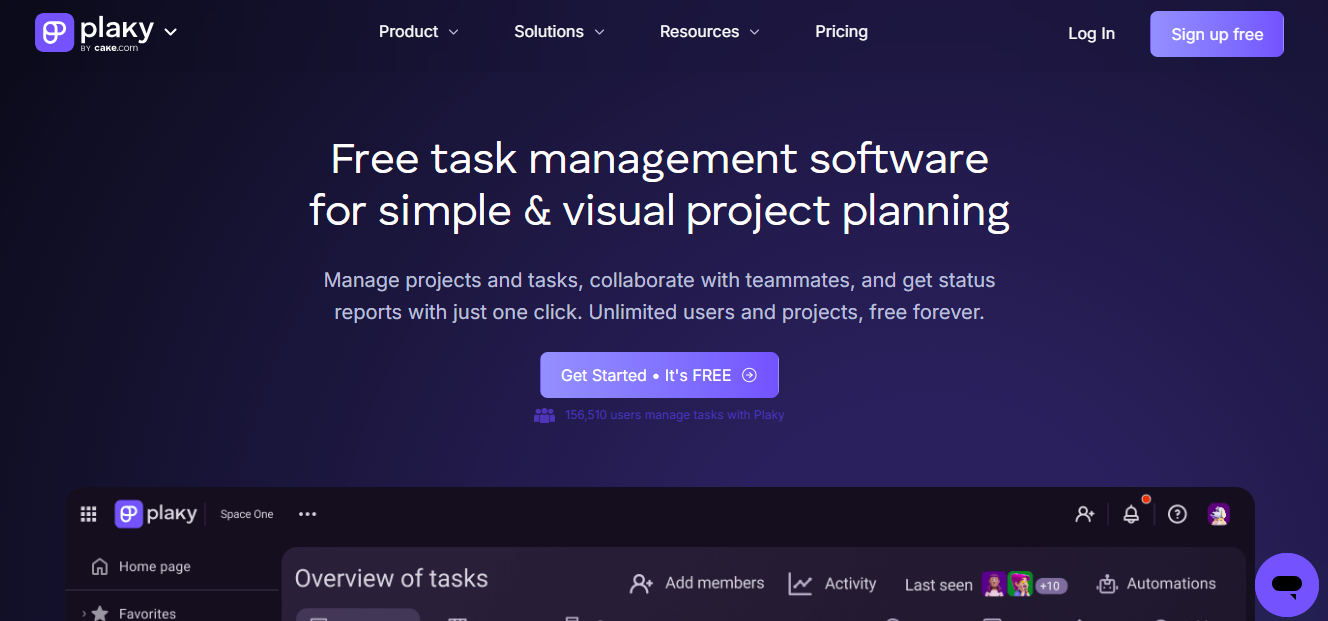 Plaky is a newer task/project management tool that offers a free forever plan with unlimited users, tasks, and projects. It focuses on simplicity and effectiveness.
Plaky is a newer task/project management tool that offers a free forever plan with unlimited users, tasks, and projects. It focuses on simplicity and effectiveness.
Features (Free Plan)
- Unlimited users, unlimited tasks, unlimited projects.
- Visual task boards and collaboration tools.
- Web and mobile support.
Reviews
Users generally like Plaky for its freedom (no user or project caps). Also praised for being lightweight and fast. Some drawbacks: fewer integrations compared to older tools, and fewer advanced features like Gantt charts or advanced reporting.
Pricing Overview
- Free plan: unlimited usage as above.
- Paid plans likely add advanced features or support.
Pros
- Unlimited everything on a free plan.
- Very good for new teams or individuals with many small projects.
- Low friction—easy to use.
Cons
- Less feature richness in terms of reporting, automation, and integrations.
- UI might be simpler, less polished than big names.
Best For
- Teams or individuals with many tasks/projects who don’t need advanced features.
- People who value unlimited users and projects over fancy extras.
Plaky is great when you want freedom and simplicity without paying. If your needs are basic, it can serve you very well.
6) Teamwork.com
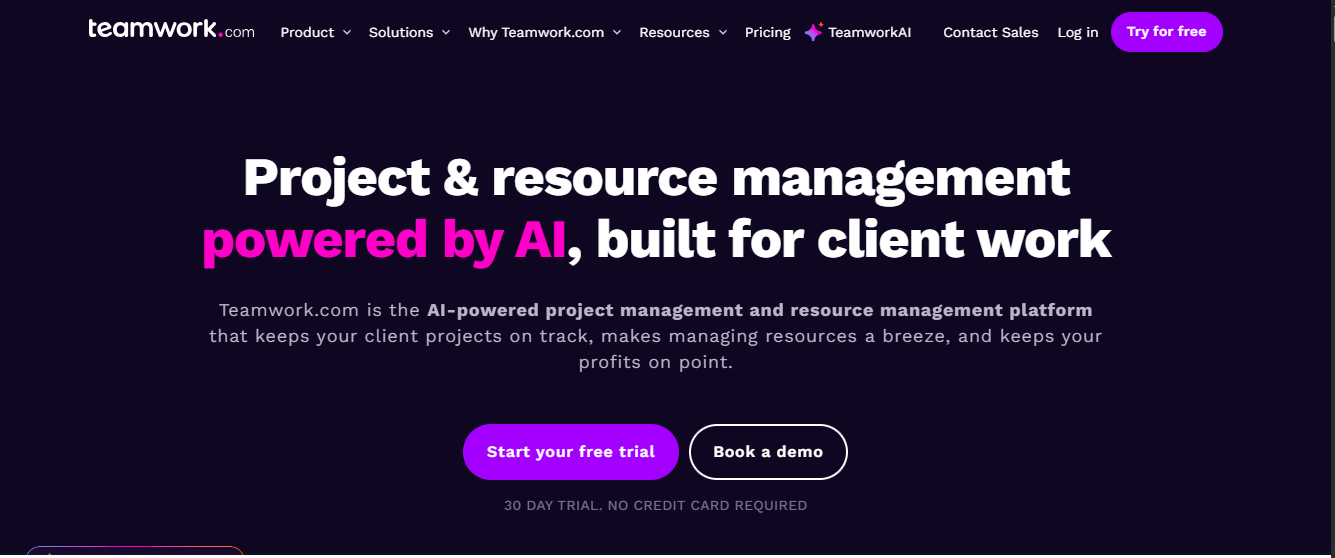 Teamwork.com is a better-known name in project/task management, which also offers a free plan suitable for small teams. It gives core features and lets teams try before upgrading.
Teamwork.com is a better-known name in project/task management, which also offers a free plan suitable for small teams. It gives core features and lets teams try before upgrading.
Features (Free Plan)
- Free plan up to ~5 users.
- Basic project management, task assignment, and collaboration tools.
- Mobile access; some basic reports.
Reviews
Many users like Teamwork for its quality, reliability, and smoother workflows. But some say the free plan is limited and may push you to upgrade as you grow.
Pricing Overview
- Free plan: core features for small team members.
- Paid versions add advanced features: advanced views, more users, and more storage.
Pros
- Good brand and stability.
- Useful for teams getting started.
- Clean UI, helpful support resources.
Cons
- Free plan limits can restrict bigger workflows.
- Some advanced functionalities are locked behind a paywall.
Best For
- Small teams want a reliable tool with free collaboration.
- Users who value stability and known providers.
Teamwork offers a good free path for starting teams. If your group is small and you don’t need fancy views, it may be enough for a long time.
7) Todoist
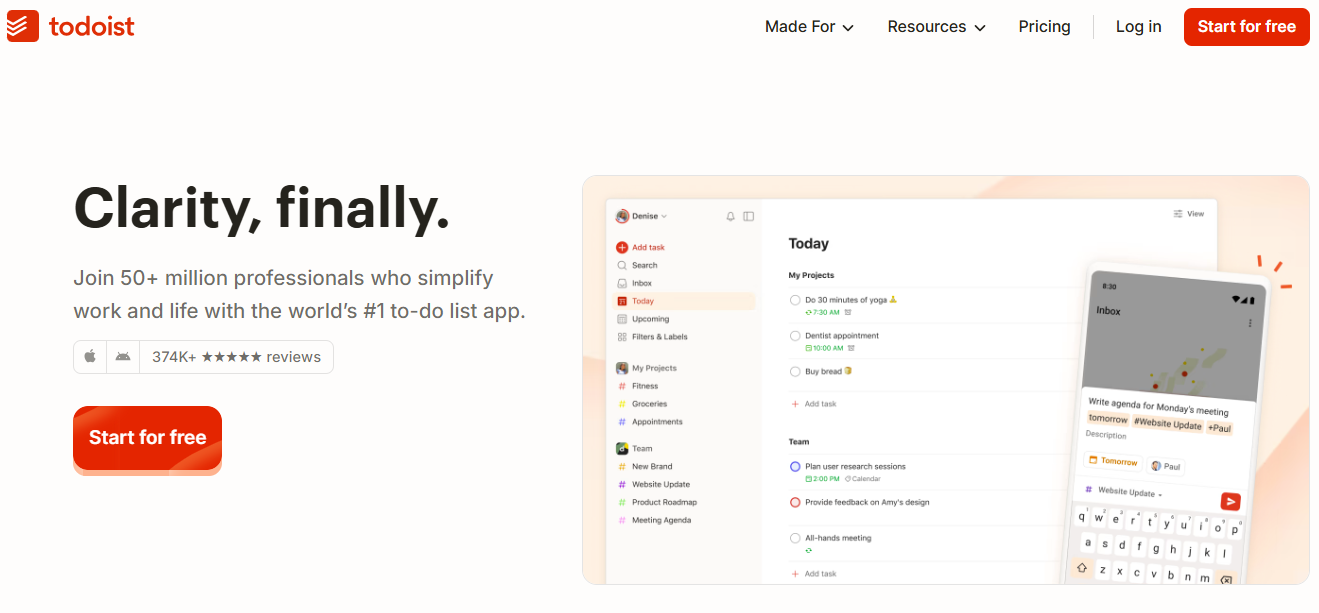 Todoist is a popular tool for individuals and small teams to track tasks simply. It aims for minimal fuss so users stay organized without complexity.
Todoist is a popular tool for individuals and small teams to track tasks simply. It aims for minimal fuss so users stay organized without complexity.
Features (Free Plan)
- Create tasks, subtasks, and deadlines.
- Labels or tags, filters, basic reminders.
- Mobile apps, web apps, and collaboration with others.
Reviews
People like Todoist for its clean design and ease of use. It doesn’t overwhelm with features. Some say the free plan lacks advanced collaboration or more complex workflows.
Pricing Overview
- Free plan: basic functionality, limited number of reminders/features.
- Paid plans unlock more reminders, collaboration options, and premium themes.
Pros
- Very clean, simple, fast.
- Good for personal and small team usage.
- Minimal learning curve.
Cons
- Not ideal for large teams or complex projects.
- Missing features like Gantt charts and advanced automation.
Best For
- Individuals, students, and small teams who want to get organized without learning heavy tools.
- Users who mostly make lists, set deadlines, and want reminders.
If you want something free that works without much setup, Todoist is a solid choice. It may not do everything, but it does what it does very well.
8) Asana
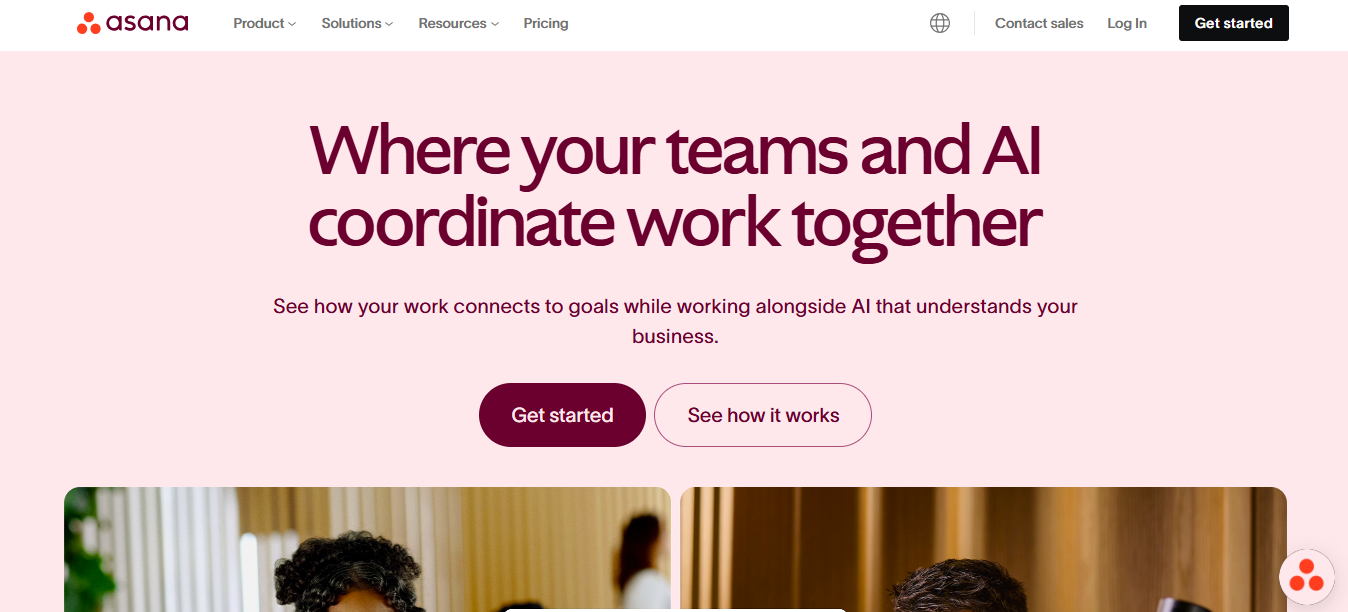 Asana is a well-known task/project tool, often used by medium-sized teams. Its free plan gives enough to handle many tasks and projects, although advanced features are reserved for paid tiers.
Asana is a well-known task/project tool, often used by medium-sized teams. Its free plan gives enough to handle many tasks and projects, although advanced features are reserved for paid tiers.
Features (Free Plan)
- Free for up to 15 users in many regions.
- Unlimited tasks and projects.
- Basic list and board views; core integrations.
Reviews
Users like Asana because the free plan is generous in the number of tasks/projects. Some find limits with reporting or advanced timeline views.
Pricing Overview
- Free plan: core project and task management is free.
- Paid upgrades get dashboards, timelines, and more advanced features.
Pros
- Allows larger small teams (15 users) for free.
- Many integrations.
- Reliable brand, good user interface.
Cons
- Advanced features like timeline view, goal tracking, etc., are locked behind paywalls.
- May feel limited for complex project planning.
Best For
- Mid-size small teams that need more room but still want to be free.
- Those who need many projects/tasks and stable tools.
Asana is one of the best free task management tools if you have a growing team and need a reliable platform. When you outgrow the free plan, you likely move to premium—but free gives you a strong foundation.
9) ClickUp
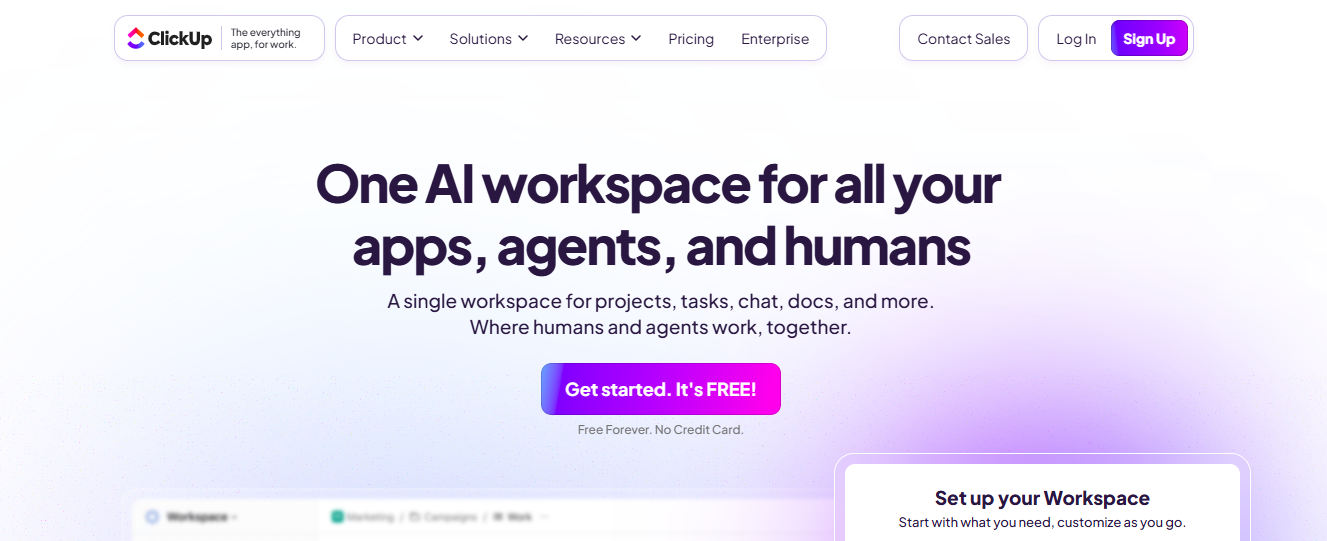
ClickUp is a flexible productivity platform that covers many ways of working. Its free plan includes several valuable tools and views, making it popular with users who want to control customization.
Features (Free Plan)
- Several task views, collaboration tools, mobile + desktop access.
- The free version includes boards, lists, and calendars in many cases, though advanced views or automation are limited.
Reviews
Users appreciate how much functionality you get from the free tier. People say it works for small teams trying different layouts. Downsides: performance may drop with many tasks; some features are limited to paid users.
Pricing Overview
- Free plan: many useful features are free, but usage or feature caps apply.
- Paid plans are more expensive; unlock automation, advanced reporting, etc.
Pros
- High flexibility; many ways to organize tasks.
- Good for teams who want to shape their workflows.
Cons
- Might get too complex for newbies.
- Some free plan limits on the number of usable “spaces” or view types.
Best For
- Teams that like trying different task layouts and have some tech comfort.
- Users who want to eventually upgrade when needed.
ClickUp is powerful. On a free plan, it gives lots of value, especially if you want flexibility. If your team grows or needs more automations, you’ll see where paid features kick in.
10) Nifty
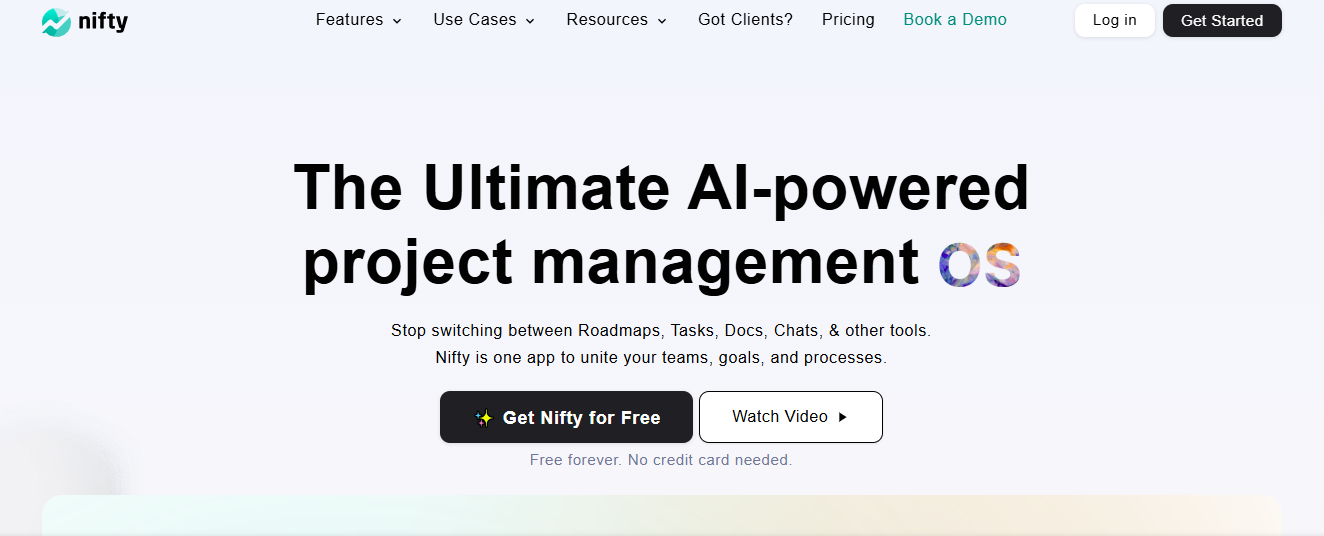 Nifty offers a tool that blends project management, task boards, and collaboration. It has a free plan useful for basic teamwork and helps keep everyone aligned.
Nifty offers a tool that blends project management, task boards, and collaboration. It has a free plan useful for basic teamwork and helps keep everyone aligned.
Features (Free Plan)
- Core task boards, project views, collaboration, and basic scheduling.
- Allows some integrations and mobile app access.
Reviews
Users like Nifty for its usability and team focus. Limits are small in feature-rich parts, but for many teams, the free plan does enough.
Pricing Overview
- Free plan: limited in the number of projects or features, but usable.
- Paid tiers offer more visuals, capacity, and automations.
Pros
- Clean, team-friendly interface.
- Good collaboration and communication tools.
Cons
- Feature limits are noticeable once projects increase.
- Free versions of some modules may be slow or capped.
Best For
- Small remote teams or creative teams need collaboration and visual tools.
- Teams that want to start free and perhaps upgrade later.
Nifty is solid if you need a free tool that helps teams stay organized. It’s among the stronger free options for 2025.
Frequently Asked Questions (FAQs):
Q: Can free task management tools really handle big projects?
A: Usually not complex ones. Free plans often limit certain features (automation, advanced views), user seats, or storage. But for small projects or teams, many free tools are more than enough.
Q: What’s the biggest trade-off when using a free plan?
A: You’ll often lose advanced features (like full automation, advanced reports, Gantt views, priority support) or have limits on users/projects/storage. That’s expected.
Q: Are free tools safe and reliable?
A: Most are. Big names like Zoho, Trello, and Asana are stable. But always check if the tool offers data backup, secure logins, and good privacy policies.
Q: How do I switch tools later if needed?
A: Export your tasks/data if possible (many have CSV or export options). Try the tools you want early to see which you prefer, using your checklist of factors.
Q: How many tasks/projects can I manage on a free plan?
A: It varies a lot by tool. Some offer unlimited, others restrict numbers. Check each tool’s “free plan specs” section.
Q: Can free tools be used for remote teams?
A: Yes. Many work in web + mobile, allowing comments/attachments, and collaborators. But bandwidth/speed and storage or file attachment size may matter.
Conclusion:
Free task management software in 2025 has reached a new level—many platforms now offer Kanban boards, Gantt charts, time tracking, and collaboration features at no cost for small teams or simple projects.
Among the top picks, ProProfs Project is ideal if you want full features free for a very small team, while Trello and Plaky are great choices for those who prefer visual boards and simplicity. For teams needing structured timelines or task dependencies, Zoho Projects or Teamwork.com stand out.
The best approach is to select one or two tools, test them with your real tasks, and see which feels most natural before committing. Use the comparison table and checklist above to ensure you pick a platform that not only looks good now but also scales smoothly with your needs over time.

